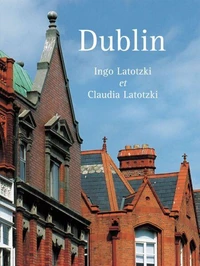Like so many other cities of South America, Rio is an urban sprawl containing some truly stunning contrasts. Yet Rio comes alive, really, for only two things - soccer and the samba. According to tradition, founded by the Portuguese navigator André Gonçalves on 1 January 1502, declared the capital of Brazil by King John in 1763, Rio underwent major reorganization under President Alvarez at the beginning of the 20th century.
Avenues and boulevards were laid out in a logic that added overall cohesion to the city. The greatest architects of the time and place were invited to make use of their talents. The houses merge with the tropical countryside, which features banana and sugar plantations lining the large bay that is dominated by the Pão de Açúcar - the famous Sugar Loaf Mountain. Other tourist delights include the Carioca aqueduct, the São Bento monastery and the Cathedral of Our Lady of Candelária which are close to each other, and the Quinta da Boa Vista public park.
Rio is also famous for its wonderful beaches - such as those of Copacabana and Ipanema - on which the most beautiful women in the world tan themselves to a gorgeous golden colour wearing the skimpiest of costumes. But there is so much to catch the eye in this city, from the areas of avant-garde architecture to the miserable shanties of the favelas - all of which empty themselves of their inhabitants during Carnival, when costumes may again be both imaginative and leave little to the imagination, or when there is an important football match on at the Maracanã Stadium.
Like its population, Rio is a compound of all the colours, all the shades, between black and white.
Like so many other cities of South America, Rio is an urban sprawl containing some truly stunning contrasts. Yet Rio comes alive, really, for only two things - soccer and the samba. According to tradition, founded by the Portuguese navigator André Gonçalves on 1 January 1502, declared the capital of Brazil by King John in 1763, Rio underwent major reorganization under President Alvarez at the beginning of the 20th century.
Avenues and boulevards were laid out in a logic that added overall cohesion to the city. The greatest architects of the time and place were invited to make use of their talents. The houses merge with the tropical countryside, which features banana and sugar plantations lining the large bay that is dominated by the Pão de Açúcar - the famous Sugar Loaf Mountain. Other tourist delights include the Carioca aqueduct, the São Bento monastery and the Cathedral of Our Lady of Candelária which are close to each other, and the Quinta da Boa Vista public park.
Rio is also famous for its wonderful beaches - such as those of Copacabana and Ipanema - on which the most beautiful women in the world tan themselves to a gorgeous golden colour wearing the skimpiest of costumes. But there is so much to catch the eye in this city, from the areas of avant-garde architecture to the miserable shanties of the favelas - all of which empty themselves of their inhabitants during Carnival, when costumes may again be both imaginative and leave little to the imagination, or when there is an important football match on at the Maracanã Stadium.
Like its population, Rio is a compound of all the colours, all the shades, between black and white.

 , qui est-ce ?
, qui est-ce ?